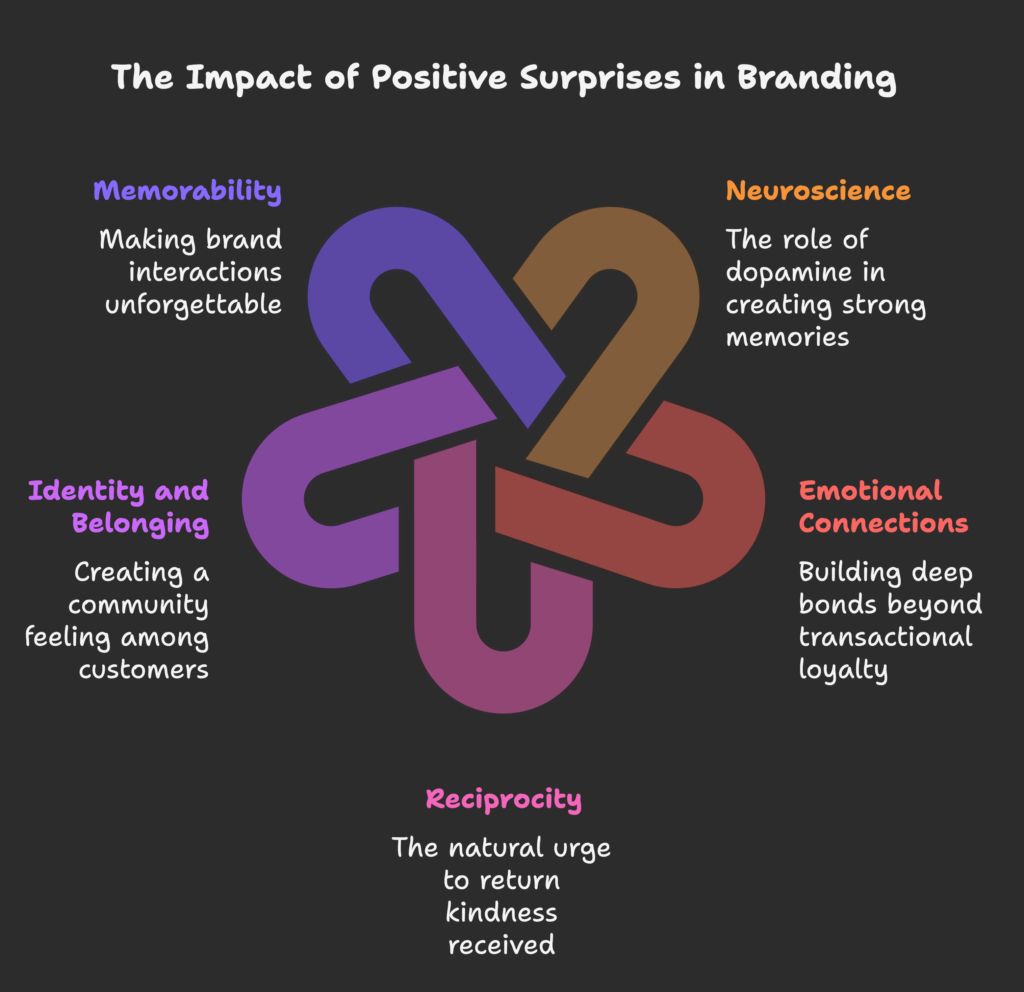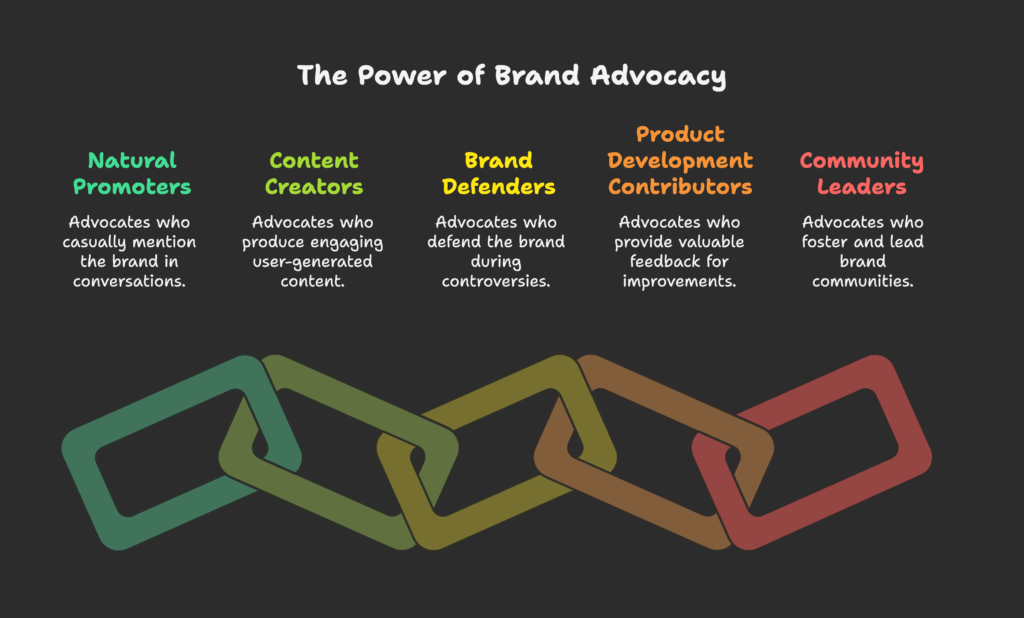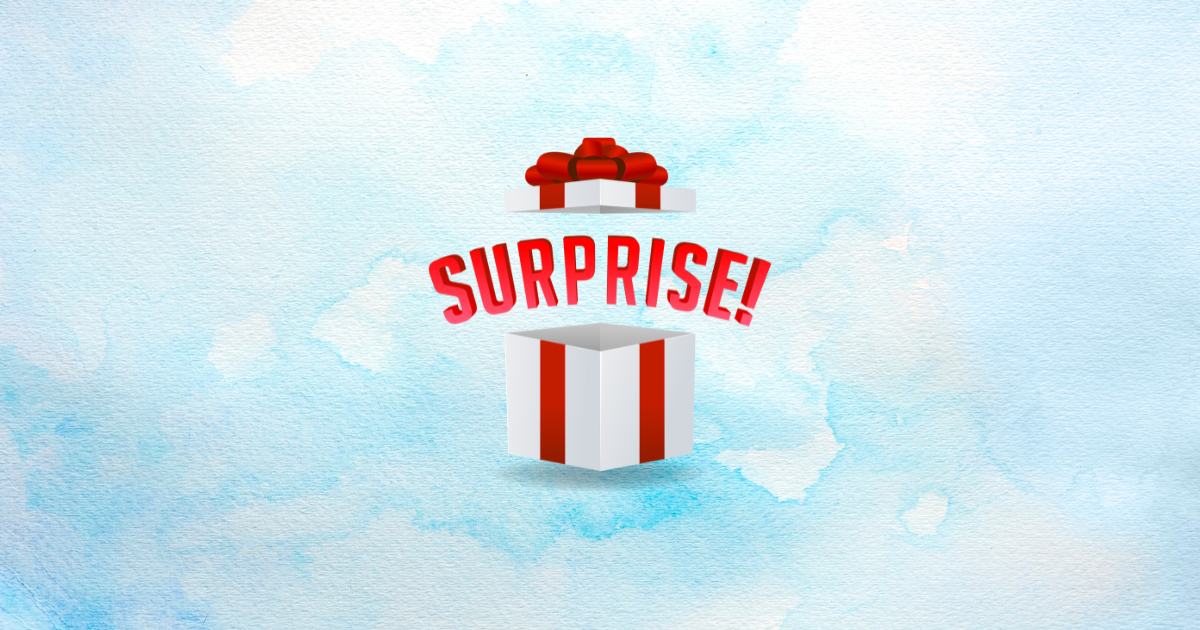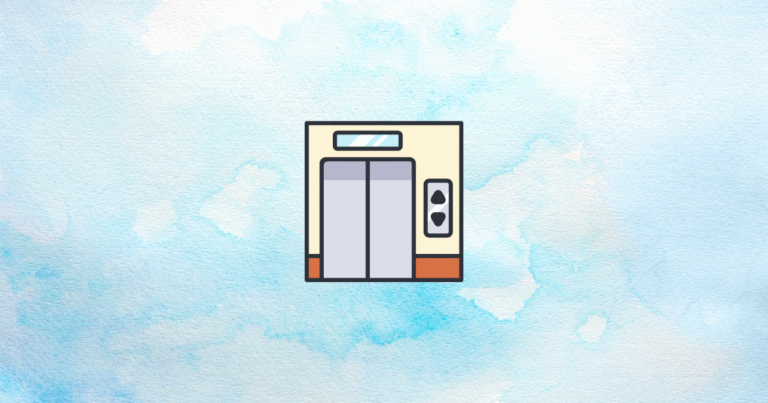Have you ever received a free dessert at a restaurant without asking, or a handwritten thank-you note in your online order? Didn’t it feel special and exciting? This article is all about those little surprises that turn regular customers into enthusiastic fans. By reading this, you’ll learn how to tap into human psychology, create unforgettable moments, and inspire people to spread the word about your brand. Ready to discover the power of surprise and delight? Let’s jump right in!
Introduction to Surprise and Delight Marketing
In this section, you will learn the basic idea behind surprise and delight marketing, its evolution through history, how it can boost your revenue, and why it matters from a psychological perspective. Get ready to uncover the core reasons this approach creates magical connections between brands and people.
Definition and Core Concepts
Surprise and delight marketing means giving customers a positive experience that goes beyond what they expect. Instead of just meeting their needs, you amaze them with thoughtful gifts, special offers, or kind gestures. This strategy encourages people to feel a deeper bond with a brand. Because the experience is unexpected, customers often remember it for a long time, making them more likely to share their story with others.
Historical Evolution
In the past, many businesses aimed only for customer satisfaction. Over time, they realized that exceeding expectations drives loyalty more than routine service. As competition grew, companies started looking for fresh ways to stand out. Surprise and delight techniques emerged, moving brands from “adequate” to “unforgettable.” Today, more businesses use these strategies to break through the noise and create memorable experiences.
The Business Case for Surprise and Delight
Surprise and delight efforts often lead to higher revenue, better customer retention, and more referrals. In fact, 94% of customers who received unexpected gifts reported feeling more positive about the company. These positive feelings translate into repeat business and free word-of-mouth promotion. It’s a powerful way to transform occasional buyers into long-term supporters.
The Psychology-Marketing Intersection
Human psychology plays a huge part in why surprise and delight works. We are wired to respond strongly to unexpected rewards, which trigger emotional reactions. These emotions then become linked to the brand, leading to loyalty and genuine enthusiasm. By understanding this link, marketers can create strategies that spark lasting connections.
So far, you’ve learned how surprise and delight began and why it matters. But how does our brain really react to unexpected gifts? Get ready to explore the science in the next section!
The Psychological Foundations of Surprise and Delight
This part explains how our minds and emotions react to positive surprises. You’ll see how delight impacts the brain, how it forms emotional bonds, and why unexpected gestures stick in our memory better than the routine. After this, you’ll understand the depth of the impact you can make on your audience.

The Neuroscience of Pleasant Surprises
When someone receives something delightful out of the blue, the brain produces dopamine. Dopamine is a chemical linked to pleasure, motivation, and learning. Because the experience is a pleasant surprise, it makes a strong mental imprint. People remember these moments more vividly than everyday events. That’s why even small gestures can have a big impact on how a brand is perceived.
Emotional Connection Formation
Positive surprises encourage emotional connections between customers and brands. When people feel valued, they sense a personal link. This bond goes beyond logic—customers feel “seen” and appreciated. Over time, these connections become more important than simple transaction-based loyalty, because they involve the heart, not just the wallet.
The Reciprocity Principle
Humans have a natural urge to return kindness. This is called the reciprocity principle. When a brand gives something unexpected—like a free upgrade or a kind note—customers often feel compelled to repay them. This repayment might show up as positive reviews, referrals, or a stronger commitment to that brand over competitors.
Identity and Belonging
When brands personalize surprises, people feel more like members of a community than just one-time customers. Personalized interactions can create a “we’re in this together” feeling. That sense of belonging is strong and makes customers proud to associate with a brand. They often share these experiences with others, amplifying your brand message naturally.
The Memorability Factor
Customers usually forget ordinary interactions, but a delightful surprise is anything but ordinary. These moments become favorite stories people tell their friends or post on social media. Because they are memorable, they continue to shape how people view the brand well after the initial experience. That lasting impression keeps your brand at the forefront of their mind.
You’ve seen how the human mind loves surprises. Next up, discover how these delighted customers can grow into devoted brand advocates!
From Satisfied Customers to Brand Advocates
In this part, you’ll learn about how a simple customer can become a passionate brand advocate. We’ll explore the journey from satisfaction to active promotion, the power of emotional bonds, and the exciting ways delighted customers share their love for a brand with others.
The Advocacy Spectrum
Every loyal customer starts somewhere on the spectrum of brand support. At one end, they’re just satisfied; at the other end, they’re fully engaged advocates who actively promote your brand. Research suggests that delighted customers are six times more likely to repurchase. This shows how going the extra mile can turn casual buyers into devoted fans.
Identifying Potential Brand Advocates
Look for people who engage with your social posts, write positive reviews, or consistently open your emails. These signals often show who’s ready to be nurtured into a full-blown advocate. By tracking engagement patterns and past responses, you can figure out who’s likely to share your message with enthusiasm.
The Role of Emotional Investment
When people feel emotionally invested, they talk about the brand as if it’s part of their own identity. This can happen when they’ve had a series of positive experiences or a single remarkable surprise. Emotions transform a normal buyer-seller relationship into a personal bond that drives them to keep coming back and telling others.
Word-of-Mouth Amplification
Delighted customers are four times more likely to refer the company to friends or family. This word-of-mouth effect can multiply quickly, especially on social media. With every happy testimonial, the brand gains a bigger audience—often at a low cost compared to traditional marketing.
Forgiveness and Loyalty
When you’ve delighted your customers, they’re more likely to stick with you even if something goes wrong. Studies show that advocates are five times more likely to forgive company mistakes. This cushion of goodwill can help you maintain a strong relationship while you resolve any hiccups.
Great! You’ve learned how surprise and delight leads to strong advocacy. Next, let’s see the different types of advocates you can nurture and why each type is special.
Types of Brand Advocates and Their Value
Here, you’ll explore different categories of advocates. Each type offers unique benefits to your business. From promoters who mention you in daily chats to defenders who stand by you in hard times, you’ll learn how to recognize and empower each.

Natural Brand Promoters
These advocates easily weave brand mentions into everyday talk. They’ll mention your product while chatting with friends or colleagues, without needing any rewards. Their natural enthusiasm is genuine and can be incredibly influential for new customers deciding whether to trust your brand.
Content Creators
Some advocates love sharing detailed reviews, social media posts, or videos. They enjoy telling stories, comparing products, or demonstrating how they use your services. Their user-generated content helps you reach people in a more authentic way than standard advertising.
Brand Defenders
When negative chatter appears—maybe on social media or forums—brand defenders jump in to clarify, defend, or correct the record. Their loyalty goes deep. They are often willing to protect the brand because they strongly believe in its value.
Product Development Contributors
These advocates provide constructive feedback or suggestions that help you improve. They often have fresh ideas or see details you might have overlooked. Their real-world experience can drive new product features or usability tweaks that benefit everyone.
Community Leaders
Community leaders form groups, answer questions, and create helpful resources around your brand. Their activities encourage others to engage, learn, and share. These leaders help make the brand community lively and inviting, which further strengthens advocacy.
We’ve explored the types of advocates that come from delightful experiences. Next, let’s look at the key elements to keep in mind for an effective surprise and delight strategy.
Elements of Effective Surprise and Delight Strategies
In this section, you’ll find the essential building blocks for any surprise and delight campaign. You’ll discover why authenticity, personalization, timing, value perception, and unpredictability matter. By the end, you’ll be ready to craft unique experiences that resonate with your audience.
Authenticity and Brand Alignment
Your surprises should reflect what your brand truly stands for. If your gesture feels off-brand or forced, customers may see it as insincere. Make sure the delight you offer is an extension of your brand personality. That way, customers feel the gesture is genuine and not a marketing trick.
Personalization and Relevance
Customers love offers that match their preferences. 83% of people expect personalized experiences. Use customer data to tailor your surprises. When a gift or message is relevant to someone’s needs, it becomes more valuable and memorable.
Timing and Context Sensitivity
Even the best surprise can fall flat if it arrives at the wrong moment. Think about the customer journey and pinpoint the times a positive shock might mean the most—such as after a purchase, during a milestone, or when a problem is resolved. Well-timed surprises create a sense of care and thoughtfulness.
Value Perception vs. Cost
Effective surprises don’t have to be expensive. What matters is the perceived value. A handwritten note can mean more to a customer than a random discount code. Find the balance between actual expense and emotional impact.
Scalability Considerations
As your program grows, make sure your team and budget can handle it. You don’t want to promise something you can’t consistently deliver. Build a strategy that allows for adaptability, so you can maintain a high level of surprise and delight for all customer segments.
Unpredictability Factor
Customers quickly learn patterns. If you always give the same gift or use the same approach, the sense of surprise fades. Vary the timing, type of reward, and method of delivery. Keeping people guessing keeps them excited.
You’ve seen the key ingredients for creating a remarkable experience. Now let’s see how these strategies can be applied across different types of businesses!
Implementation Frameworks for Different Business Types
This part demonstrates how surprise and delight can be integrated into various industries. From online shops to in-person services, you’ll see how these ideas adapt to fit different customer journeys, loyalty programs, and even crisis recovery situations.
E-commerce Surprise and Delight Tactics
Online stores can add unexpected gifts in shipments, send cheerful follow-up emails, or include thoughtful package inserts. Simple gestures like free samples or a personalized thank-you note can elevate the unboxing experience and prompt positive reviews.
Service Industry Applications
For service-oriented businesses, memorable moments might be a small upgrade, a genuine compliment, or a speedy resolution to a problem. Since customers often judge services by “moments of truth,” adding surprise perks can tip the scales in your favor.
B2B Relationship Building
While B2C surprises often involve physical gifts, B2B relationships can also benefit. Send a relevant industry report, provide an unexpected consultation, or offer a free training session. B2B cycles are longer, so these small surprises keep your brand top-of-mind.
Retail and In-Person Experiences
In physical stores, staff can offer a free sample, a product demo, or even an unannounced discount at checkout. You can also create a pleasing environment—like offering a cozy seating area with refreshments. These touches make the in-person journey fun and inviting.
Loyalty Program Integration
If you have a formal loyalty program, add unpredictable rewards. For instance, a monthly “mystery perk” or spontaneous bonus points keep members engaged. Just be careful to avoid making these surprises feel like regular entitlement.
Crisis Recovery Applications
When a service failure happens, an unexpected personal apology or special offer can restore goodwill. Showing genuine concern and a wish to repair the relationship can turn a negative moment into a loyal partnership.
Curious to see real-life examples? Let’s check out some successful campaigns next!
Case Studies of Successful Surprise and Delight Campaigns
In this part, you’ll discover how major brands have put surprise and delight into action. You’ll see how companies of all sizes—from giants like Coca-Cola to smaller brands—create memorable moments that drive loyalty and advocacy.
Coca-Cola’s “Share a Coke” Campaign
Coca-Cola placed people’s names on bottles, sparking a wave of excitement. Customers loved finding their own name or a friend’s name. This personalized approach turned a simple beverage into a feel-good, shareable experience that flooded social media with positive buzz.
Zappos’ Customer Service Surprises
Zappos has a reputation for upgrading shipping or sending thoughtful goodies without notice. Such gestures make customers feel special. Their customer-focused philosophy has built a community of fans who constantly praise the brand online.
Qualtrics’ Wish Fulfillment at Brandweek
Qualtrics once granted attendees’ wishes in real-time at a marketing conference. People could ask for small items or experiences, which Qualtrics fulfilled on the spot. This created delightful stories everyone couldn’t wait to share, boosting brand awareness.
Chewy’s Compassionate Customer Care
Chewy stands out by sending flowers or hand-painted pet portraits during tough times, like when a pet passes away. Customers often share these touching moments on social media, generating deep emotional goodwill and loyalty.
LEGO’s Heartwarming Customer Care
LEGO is known for sending replacement pieces at no cost and even adding a personal touch with a friendly letter. These small acts have gone viral, proving that heartfelt service can travel far online and inspire massive advocacy.
Small Business Applications
Smaller brands often create delightful surprises too, such as local bakeries sending handwritten thank-you notes or boutiques offering a surprise discount at checkout. Their close-knit connection with the community can make each interaction more personal and meaningful.
You’ve seen real success stories. Ready to design your own strategy? Let’s dive into how you can implement these ideas in your business!
Implementation Strategies and Best Practices
This section is all about the practical side. Learn how to gather the right data, work with different teams, plan your budget, train your staff, and organize your rollout. By following these best practices, you’ll set a solid foundation for your campaigns.
Customer Data Analysis for Personalization
Use your CRM system to understand shopping patterns, birthdays, or product preferences. The more you know about each customer, the easier it is to tailor a surprise just for them. Keep your data organized and focus on patterns that matter.
Cross-Functional Team Coordination
Marketing, customer service, and operations need to sync up to deliver consistent experiences. Establish open communication channels so each team knows when and how to execute the surprise. A shared plan helps avoid missteps and confusion.
Budgeting Models and ROI Forecasting
Before you start, decide how much you can spend on your surprise and delight campaigns. Then estimate the expected returns, like increased retention or referrals. This helps you make wise choices and justify the investment to stakeholders.
Staff Training and Empowerment
Team members should feel free to make decisions on the spot. Encourage them to look for moments where a simple gesture could brighten someone’s day. Provide guidelines so they understand the brand tone and style, but let them add their personal warmth.
Risk Assessment and Mitigation
Some surprises might backfire, especially if they don’t meet customer expectations or violate privacy. Plan for potential issues by having a clear policy on data usage and a method for resolving complaints quickly.
Implementation Timeline Development
Roll out your plan in phases. Start with a pilot group or a small set of customers. Learn from their feedback, then scale the program to larger segments. This approach helps you refine your surprise tactics along the way.
You now have the tools to implement your own program. Want to know how to deliver these delights in each channel? Let’s check that out next!
Tactical Elements for Different Channels
In this part, you’ll see channel-specific ideas for bringing surprise and delight to life. Whether you focus on social media, email, physical packaging, or face-to-face interactions, there’s a tactic here for you.
Social Media Surprise Strategies
Surprise followers with an unannounced giveaway, a personalized response to a comment, or a shout-out during a live session. Since 58% of consumers share positive experiences, social media is a goldmine for amplifying delight.
Email Marketing Applications
Emails don’t have to be routine. Send an unexpected discount code on a customer’s anniversary of joining your list. Or drop a positive message that doesn’t push a sale but simply thanks them for being part of your community.
Physical Packaging and Unboxing Experiences
Add a tiny surprise into shipments, like a sticker, a note, or a small free sample. The “unboxing moment” can become a shareable highlight, encouraging customers to post photos and videos online.
Customer Service Interaction Opportunities
Encourage your support team to be flexible. If they notice a special occasion or a loyal customer, they can provide a small freebie or a kind gesture. This personal approach turns a simple service call into a standout memory.
Website and Digital Experience Enhancements
Offer hidden coupons or gamified pop-ups that reward people at random times. You might also recognize repeat visitors with a personalized greeting or a quick thank-you message. Even small digital gestures create a big impression.
In-person and Retail Environment Applications
Train store employees to spot moments for surprise—like offering free product samples or complimentary gift-wrapping. A friendly staff member who goes the extra mile can shape a shopper’s entire perception of your brand.
These channel tactics can boost the reach of your surprises. Next, let’s figure out how to measure all this success!
Measuring the Impact of Surprise and Delight
It’s crucial to know whether your campaign is worth the effort. Here, you’ll learn which metrics to track, how to analyze social sentiment, and how to connect these findings to long-term brand health.
Quantitative Metrics Framework
Track engagement rates, repeat purchases, and referral counts to gauge the results of your surprise and delight efforts. Compare these metrics to previous periods or to a control group that didn’t receive any special treatment.
Social Sentiment Analysis
Listen to social media chatter to find out if customers are talking about their delightful moments. Look for positive mentions, hashtags, and comments that highlight surprise experiences. This feedback can show you what’s working and what needs fine-tuning.
Customer Lifetime Value Impact
One of the best indicators of success is an uptick in customer lifetime value. If loyal customers spend more over time and remain engaged longer, that suggests your surprises are leading to genuine loyalty.
Brand Health Measurement
Monitor brand perception through surveys, net promoter scores (NPS), and focus groups. A rising NPS or improved survey results can mean your surprise and delight strategy is working effectively across the board.
Attribution Challenges and Solutions
It can be tricky to tie specific outcomes directly to surprise and delight efforts. Use tracking codes, unique offer links, or feedback forms to gather data. Even then, keep in mind that some effects (like word-of-mouth) are broader and harder to measure precisely.
Comparative Analytics
Compare your results to industry benchmarks or your own historical data. This reveals how much progress you’ve made and where you stand in the larger market. If you’re exceeding averages, you’re likely on the right path.
Knowing how to measure your success is crucial. But you might still face hurdles. Let’s see how to handle common challenges next!
Common Challenges and How to Overcome Them
In this section, you’ll see typical pitfalls of surprise and delight strategies and learn how to tackle them. From keeping surprises fresh to handling budget constraints, each challenge is matched with a practical solution.
Maintaining the Surprise Element
When people start expecting these special perks, surprises lose their spark. Vary your offers and keep them spaced out. You can even skip it sometimes, so people never know exactly when the next treat will arrive.
Scaling Personal Touches
As your customer base grows, it can be tough to keep up. Use technology to automate tasks where possible but leave room for human interaction. Balance efficiency with authenticity to sustain genuine connections.
Managing Customer Expectations
Once you spoil your customers, they might expect it every time. Communicate that surprises are occasional extras. Remind them that these are tokens of appreciation, not standard entitlements.
Budget Constraints and Prioritization
If funds are limited, focus on high-impact gestures with low costs—like handwritten notes or personalized emails. Align your spending with the customers most likely to appreciate and share these positive experiences.
Consistency Across Touchpoints
All departments and channels should deliver the same brand message. If a customer gets incredible service online but a dull experience in-store, the effort weakens. Provide training and guidelines for every team.
Cultural and Individual Differences
Not every surprise works for every culture or person. Research your audience’s values and preferences. Offer options and respect boundaries to ensure your surprise is received in a positive way.
Challenges are just stepping stones if you manage them wisely. Now, let’s peek into the future and see how surprise and delight is evolving.
Future Trends in Surprise and Delight Marketing
This section explores how new technology and social changes shape the future. You’ll see how AI will supercharge personalization, why sustainability matters, and how emerging tools like AR can create immersive surprises.
AI-Driven Personalization Advancements
AI can quickly analyze huge amounts of data, spotting patterns the human eye might miss. This allows for hyper-personalized surprise offers. Brands can identify the perfect moment and the perfect perk, making customers feel even more valued.
Sustainable and Purpose-Driven Surprises
Customers increasingly care about the planet and social causes. Aligning your surprises with charitable or eco-friendly components can deepen the sense of goodwill and ensure your brand stands out for positive reasons.
Virtual and Augmented Reality Applications
AR filters, VR showrooms, or immersive brand experiences let you surprise customers in entirely new ways. Imagine hosting a digital treasure hunt where participants find special discounts in a 3D environment. The novelty alone can create a lasting impression.
Predictive Analytics and Opportunity Identification
With predictive analytics, you can spot when a customer is likely to churn or make a new purchase. Intervening with a timely surprise—like a discount on their abandoned cart—can make a big difference.
Cross-Brand Collaborations
Brands sometimes partner to create double surprises—like co-branded gift packages or shared loyalty bonuses. These partnerships expand your reach by exposing each brand’s audience to the other in a fun, unexpected way.
Privacy-First Personalization
Stricter privacy rules mean you must be clear about how you gather and use customer data. Focus on ethical data practices. This helps maintain trust while still offering personalized surprises.
These exciting trends show us what’s coming next. In the following section, you’ll learn how to embed surprise and delight into your company’s very culture.
Building a Surprise and Delight Culture
Learn how to move beyond one-off campaigns and make surprise and delight a core part of your organization. You’ll see why leadership support, cross-team efforts, and a focus on employee empowerment matter for keeping the magic alive.
Leadership Buy-In and Advocacy
When leaders openly champion surprise and delight, employees feel it’s an important part of the company mission. Leadership support helps secure the resources and freedom needed to maintain genuine gestures.
Cross-Departmental Collaboration
All teams—marketing, sales, customer service—benefit from delight initiatives. When they cooperate, you can sync branding messages and tactics. This unity creates consistent surprises at each customer touchpoint.
Employee Empowerment Frameworks
Let employees decide how best to brighten a customer’s day. Provide a playbook and budget for small gestures, but trust their judgment. This level of trust makes the experiences more authentic.
Incentive Structures and Recognition
Acknowledge and reward staff who excel in delivering joyful moments. Whether it’s a shout-out or a small bonus, recognition motivates them to keep spreading delight.
Internal Communication Strategies
Share success stories. When one team member’s act of kindness goes viral, let everyone know. These stories inspire others and build momentum. It also fosters a sense of pride and teamwork.
Training and Skill Development
Provide workshops on empathy, active listening, and problem-solving. Well-trained employees can spot hidden opportunities to create memorable experiences that customers treasure.
You’re nearly there! Next, discover how to wrap up your new insights into a practical, long-term plan.
Conclusion and Implementation Roadmap
This final section pulls together everything you’ve learned. You’ll see clear steps for putting surprise and delight into action, setting goals, and measuring success. Let’s tie it all up so you can start making your own brand advocates today.
Core Principles Summary
Always be authentic, focus on personalized gestures, and remember that timing is key. These principles, backed by psychological insights, will guide you in creating unforgettable customer moments.
Phased Implementation Approach
Start small. Test different approaches with a select group, measure results, and scale gradually. This way, you can adjust tactics based on real feedback before rolling them out widely.
Resource Allocation Guidance
Invest where it counts. A portion of your marketing budget should be dedicated to surprise and delight, but begin with modest tests if you’re unsure. Once you see positive returns, you can confidently expand your efforts.
Success Criteria Development
Define what success means for you. Are you aiming to boost sales, social mentions, or loyalty program memberships? Choose the metrics that match your strategic goals and track them consistently.
Continuous Improvement Model
Your efforts should evolve over time. Keep an eye on customer feedback, market trends, and internal data. Tweak your approach whenever you spot a new opportunity or a pattern worth exploring further.
Long-Term Vision Integration
Surprise and delight shouldn’t be a one-off stunt. Embed it into your brand’s broader vision. When everyone understands that delighting customers is part of the mission, it becomes second nature.
You’ve now seen every aspect of surprise and delight. Below, you’ll find references for deeper reading and a parting tip for Shopify store owners!
References
- Rachmad, O. (2024, August 15). Surprise and Delight Marketing Theory. OSF. https://osf.io/hbyvs/
- TLC Marketing NA. (2024, September 16). The Power of Surprise & Delight Marketing for Customer Loyalty. LinkedIn. https://www.linkedin.com/pulse/power-surprise-delight-marketing-customer-loyalty-tlc-marketing-na-t1aye
- Maxio. (n.d.). How To Turn B2B Customers Into Product Champions. Retrieved March 6, 2025, from https://www.maxio.com/blog/turning-b2b-customers-into-brand-advocates
- Trixtan. (n.d.). The Art of Surprise and Delight in Entertainment. Retrieved March 6, 2025, from https://trixtan.com/surprise-delight-art-entertainment/
- Sprout Social. (2022, October 17). Surprise and Delight: Brands Who Get It Right. https://sproutsocial.com/insights/surprise-and-delight/
- TLC Worldwide. (2024, September 13). The Power of Surprise & Delight Marketing for Customer Loyalty. https://www.tlcworldwide.com/usa/customer-loyalty-surprise-and-delight/
- ITA Group. (n.d.). Build Customer Loyalty With Surprise-and-Delight Promotions. Retrieved March 6, 2025, from https://www.itagroup.com/insights/customer-engagement/surprise-and-delight-customer-loyalty-promotions
- Propello Cloud. (2024, November 19). Why Customer Advocacy Matters: Strategies to Amplify Your Brand. https://blog.propellocloud.com/customer-advocacy
- Online Business Startup. (2024, October 8). Customer Loyalty: The Power of Surprise and Delight Marketing. https://www.onlinebusinessstartup.co.uk/blog/building-customer-loyalty-the-power-of-surprise-and-delight-marketing
- Chilli Pepper. (2024, April 2). The Surprise and Delight Effect. https://chillipepper.ie/the-surprise-and-delight-effect/
- Popupsmart. (2024, June 12). Surprise and Delight Marketing (9 Steps towards Success). https://popupsmart.com/blog/surprise-and-delight-marketing
- CMS Wire. (2019, March 29). 5 Successful Surprise and Delight Marketing Campaigns. https://www.cmswire.com/digital-marketing/5-successful-surprise-and-delight-marketing-campaigns/
Final Note: If you own a Shopify store, consider using Growth Suite to boost your sales. It offers powerful tools for managing campaigns, tracking results, and building lasting customer relationships—all crucial for your surprise and delight strategies.




